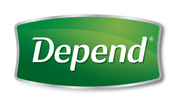An overview of incontinence medication
Of the three main types of urinary incontinence, only urge incontinence benefits from prescribed medications.
Although there are a variety of medications available, the most widely used are anticholinergics. These work by suppressing bladder contractions and delaying your urge to urinate.
Some side effects can include dry mouth, constipation, blurred vision and palpitations. However, some newer anticholinergics are said to have fewer adverse effects.
Your doctor may suggest anticholinergic medications be taken in conjunction with bladder training. The combination of these techniques with incontinence medication provides the best option for managing, and possibly preventing, further occurrences of urge incontinence.
Why anticholinergics?
Bladder (detrusor) muscle contractions are essential for normal urination, but involuntary contractions produce the symptoms of an overactive bladder. These contractions are dependent on the activation of muscarinic receptors in the bladder by a chemical known as acetylcholine.
Anticholinergic drugs block muscarinic receptor activity and block the spontaneous detrusor contractions found in an overactive bladder. Effectiveness is dose-dependent, but is often limited because the drug also affects other organs. Consequently, side effects can include dry mouth, dry eyes, confusion, constipation, drowsiness, blurred vision and increased heart rate.
Currently, anticholinergic drugs which solely select the muscarinic receptors in the detrusor are unavailable. To improve the benefit/side effect ratio, newer anticholinergic drugs have been developed with greater selectivity for the detrusor muscles and with extended release properties.
Do anticholinergics work?
The ability of anticholinergic drugs to reduce bladder contractions has been well established and documented. The Cochrane Collaboration* has extensively studied anticholinergic therapy in randomised placebo-controlled trials. Of the 51 studies involving 6,713 patients, the effect of anticholinergics was found to be 15% greater than placebo (Kuteesa and Moore, 1996).
What are the different types of anticholinergics?
There is no clear indication as to which anticholinergic drug is superior in effectiveness. Depending on particular symptoms, each of these incontinence medications affects people differently. You should consult your doctor to determine the best treatment for you.
The following drugs have been approved for use in the treatment of urge incontinence.
Oxybutynin
Oxybutynin is relatively inexpensive and the most widely prescribed anticholinergic medication for urge incontinence. Studies have shown a major improvement in 60% of patients (Kuteesa and Moore, 1996). A major side effect is dry mouth with greater than 50% discontinuing the medication because of this side effect. This is primarily because anticholinergics also affect other organs including the salivary glands.
Propantheline
Propantheline is an old drug that is still widely used in Australia and is around 60% of the cost of oxybutynin (Kuteesa and Moore, 1996). A synthetic analogue of atropine, it blocks muscarinic receptors throughout the body. However, propantheline’s side effects are quite severe and quite substantial.
Imipramine
Imipramine is a tricyclic antidepressant with beta 3 mimicking properties that relax the dome of the detrusor (bladder muscle), but with significant anticholinergic effects. Drowsiness is a common side effect, especially in the first three weeks of therapy while your body gets used to the drug. Because of this, Imipramine is useful in treating nocturia or nocturnal enuresis.
Tolterodine
Tolterodine is an anticholinergic specifically developed to treat overactive bladder. It’s similar in its effectiveness to oxybutynin, with the latter being slightly better on some outcomes such as incontinence episodes over a 24 hour period. Tolterodine halves the incidence of dry mouth compared to oxybutynin.
Trospium
Trospium is a non-selective anti-muscarinic drug as effective as oxybutynin, but with a lower incidence of adverse side effects (similar to tolterodine). A feature of trospium is that its structure has limited penetration of the blood-brain barrier which is thought to reduce adverse effects on the central nervous system. As such, it is considered especially beneficial for elderly patients.
Darifenacin
Darifenacin is a muscarinic receptor antagonist. It targets M3 receptors in muscle tissue and as a result relaxes muscles in the bladder. Some patients still develop dry mouth and constipation as M3 receptors are also present in the gut.
Solifenacin
Solifenacin is a also muscarinic receptor antagonist. It works by blocking the action of certain chemicals in the body to help decrease urination problems caused by overactive bladder. Solifenacin is more selective for bladder tissue than for salivary glands and subsequently has a lower incidence of dry mouth.
Extended-release products
Extended-release formulations of oxybutynin and tolterodine are also available. These slow-release, once-daily and convenient medications provide a constant low dosage and are thought to counter any adverse anti-muscarinic events.
*International not-for-profit organisation preparing, maintaining and promoting the accessibility of systematic reviews of the effects of health care.
Kimberly-Clark makes no warranties or representations regarding the completeness or accuracy of the information. This information should be used only as a guide and should not be relied upon as a substitute for professional medical or other health professional advice.
Take back control with Depend®
Depend has a range of products, for men and for women, to reduce the effect of incontinence on your lifestyle and allow you to take back control. Explore our range today to find the right product for you.
Sources
Drugs.com, (2015). Urinary Incontinence Medication | Drugs.com. [online] Available at: https://www.drugs.com/condition/urinary-incontinence.html [Accessed 22 Apr. 2019].
Health.com, (n.d.). 11 Drugs Used to Treat Incontinence. [online] Available at: https://www.health.com/health/gallery/0,,20462451,00.html [Accessed 22 Apr. 2019].
Kuteesa, W. and Moore, K. (1996). Cochrane Database of Systematic Reviews. Anticholinergic drugs for overactive bladder, [online] VOLUME 29 (NUMBER 1 : FEBRUARY 2006).
Mayoclinic.org, (2017). Bladder control problems: Medications for treating urinary incontinence - Mayo Clinic. [online] Available at: https://www.mayoclinic.org/diseases-conditions/urinary-incontinence/in-depth/bladder-control-problems/art-20044220 [Accessed 22 Apr. 2019].
Webmd.com, (n.d.). Common Drugs and Medications to Treat Urinary Incontinence. [online] Available at: https://www.webmd.com/drugs/2/condition-3254/problems%20with%20bladder%20control [Accessed 22 Apr. 2019].

